The Power to Youth Expedition

As we move forward and embrace new opportunities that 2024 brings, take a look at how our Power To Youth Network in Uganda created impact in the previous year. This journey book recapitulates the landmarks of 2023. Have an interesting read!
Detailed Policy Report for Uganda

The analysis found that Uganda’s policies and plans regarding HIV need to be updated, and should include a stronger emphasis on targeting men and influencing gender norms. Gender-based violence (GBV) policies and plans prioritise the need to engage with men, but that the accompanying laws are lacking. While the sexual and reproductive health (SRH) policies […]
Fund, Respond, Protect, Collect: A Desktop Review of the legal and policy frameworks that address gender-based violence in Africa

Across the world, gender-based violence continues to perpetuate harm against women and girls in their diversity. The COVID-19 pandemic has contributed to further vulnerability for women, with levels of gender-based violence (GBV), unemployment and insecurity heightened in already gender-unequal contexts. A survey on East and Southern Africa by UN Women revealed that more than 50% […]
A rapid assessment on the impact of COVID-19 stimulus packages in Sub-Saharan Africa on gender and gender-based violence

This report outlines the findings of a rapid assessment study on the impact of COVID-19 stimulus packages in Sub-Saharan Africa and their effects on gender and gender-based violence. Case studies were drawn from 6 selected countries: namely, Kenya, Mali, Rwanda, Sierra Leone, South Africa, and Zimbabwe. This Report was Submitted by Ingula Yesive for Sonke Gender Justice
Side-lined: Experiences of sex workers throughout the lockdown
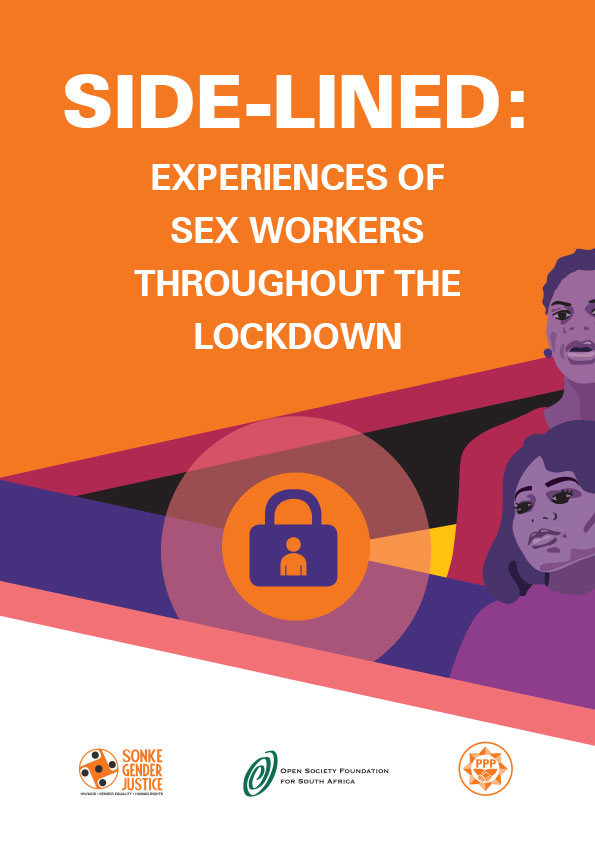
This study conducted by Sonke Gender Justice in partnership with Sisonke will explore the lives of sex workers. Sex workers have been excluded by the law as the industry is still criminalised in South Africa. For this reason, sex workers are stigmatised and discriminated against even by public service providers, such as law enforcement and […]
Analysis of the criminal records expungement process in South Africa

The issue of criminal records and the expungement process is undoubtedly a complex one, attracting much debate, largely resulting from archaic understandings of criminality. For too long this discourse has been used to rationalise the collective marginalisation of people with criminal records from society, which has not only been a justification for systemic discrimination across […]
State of South Africa’s Fathers 2021

This is the second issue of an evolving report, planned for publication every three years. It can be used in the development of policy and legislation for families, labour market regulations, educational curricula, and other training materials. It can be referenced as a source of expert information for advocacy and community groups, individual families, and […]
The State of Uganda’s Fathers Report

The State of Uganda Father’s report 2021 is the inaugural report of its kind in Uganda. The report is a product of the AfriChild Center and is inspired by ‘State of The World’s Fathers’ Produced by Promundo-US. The first-ever “State of the World’s Fathers” report was published in 2015, and followed by subsequent editions published […]
State of the Tanzania’s Fathers (SOTFs) Report

This study’s objective was to explore the level of Tanzani- an men’s engagement in parenting, caregiving, Child Rights Protection (CRP), promoting gender equality, and preventing Gender-Based Violence (GBV). The focus on fatherhood stems from its importance as an entry-point to address gender inequality, particularly cycles of violence such as Intimate Partner Violence (IPV) and Violence […]
Scorecard on FGM Laws and Policies in Five (5) MenEngage Africa Countries

Legislation plays a crucial role in defining and sustaining social and gender norms by clearly establishing a country’s national priorities and setting aside resources for their implementation. Laws and policies have the potential to lead to largescale changes in addressing social norms and institutional cultures that continue to perpetuate inequalities and violence against women and […]
Scan on FGM laws and policies in 5 MenEngage Africa countries
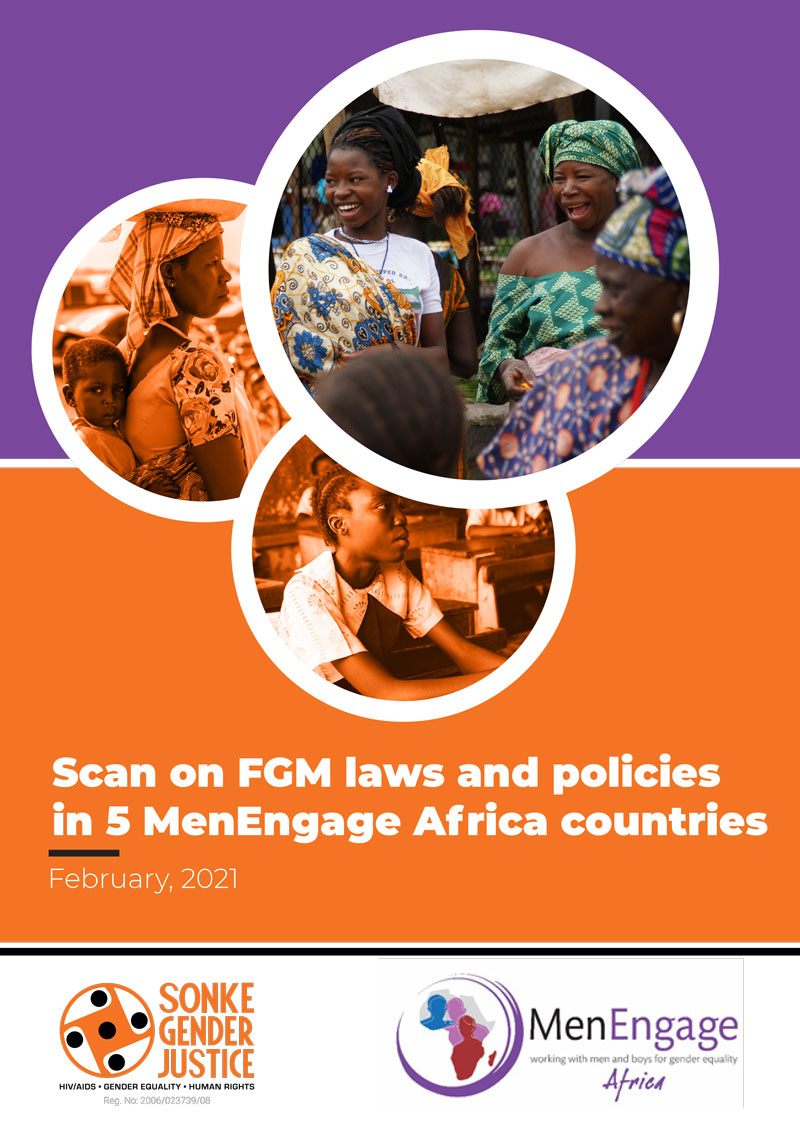
Female Genital Mutilation (FGM) is the practice of partially or totally removing the external female genitalia or otherwise injuring the female genital organs for non-medical reasons. According to the World Health Organization (WHO) FGM comprises ‘all procedures involving partial or total removal of the external female genitalia or other injury to the female genital organs […]
Evaluation of the Changing the River’s Flow for Young People (CTRF4YP) Programme

Background and Context SAfAIDS, in partnership with Sonke Gender Justice, implemented a two-year gender- transformative programme aimed at transforming gender roles and promoting more gender-equitable relationships between young men and women to reduce HIV, gender- based violence (GBV) and promote positive sexual reproductive health and rights (SRHR). The programme was titled ‘Changing the River’s Flow – A […]
PREVENTION+ Final Narrative report and Annual Report 2020

Prevention+ is a five-year programme (2016-2020) that addresses inequalities between women and men by working with men – as partners with women – to be agents of change in promoting healthy masculinities based on equality, caregiving, and non-violence. Prevention+ is implemented in Indonesia, Pakistan, Rwanda, Uganda, and in a selection of MENA countries. The Prevention+ Consortium includes Rutgers, Promundo […]
Final Evaluation of the Prevention+ programme (2016- 2020)

Prevention+ seeks to address issues of gender and inequality through interventions targeted towards men – as partners of women and agents of change. It comprises evidence-based programming at a large (multi-country) scale, working across four socio-ecological levels (individual, community, institutional and government levels) in order to contribute to the sustainable transformation of norms and practices […]
Emerging effects of COVID-19 pandemic on gender-based violence in Africa
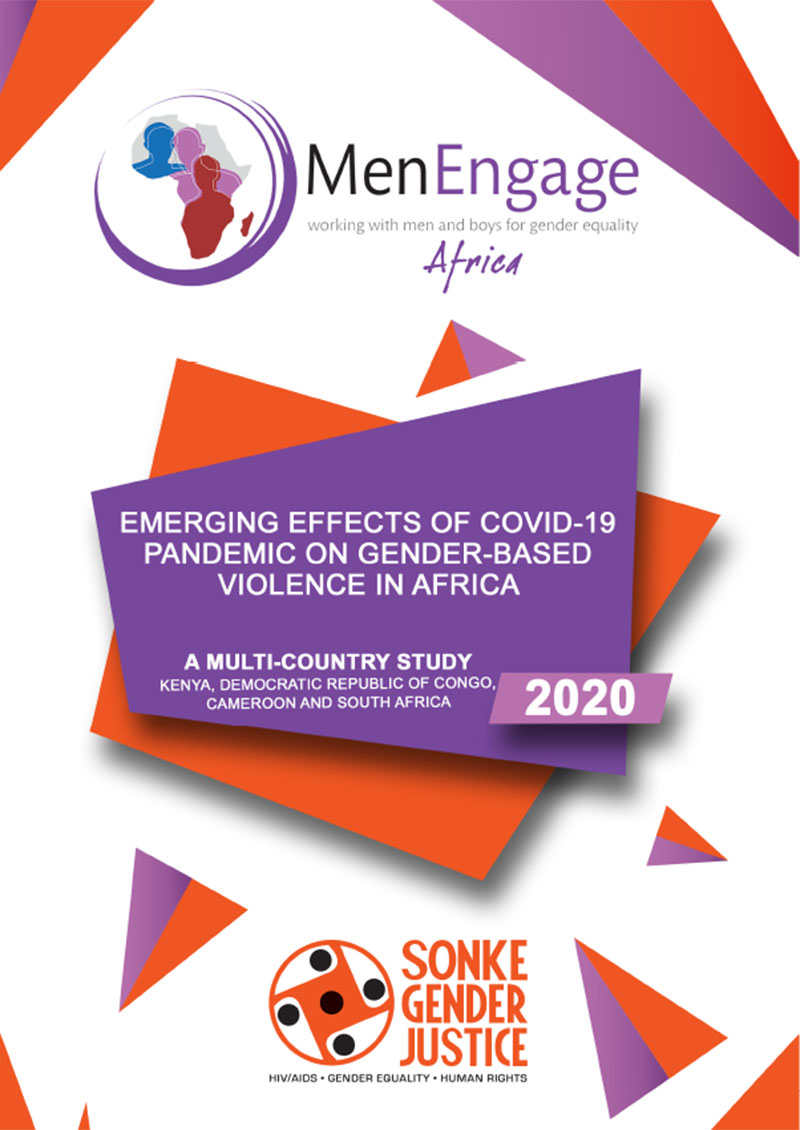
The emergence of Covid-19 has significantly contributed to the increase in gender-based violence in many societies. This study investigates the trends of this violence in Cameroon, Kenya, Democratic Republic of Congo and South Africa. The outbreak of coronavirus disease 2019 (COVID-19) affected individuals and communities in a variety of ways. Within a couple of months, […]
Engaging South African fathers with programme interventions and policies
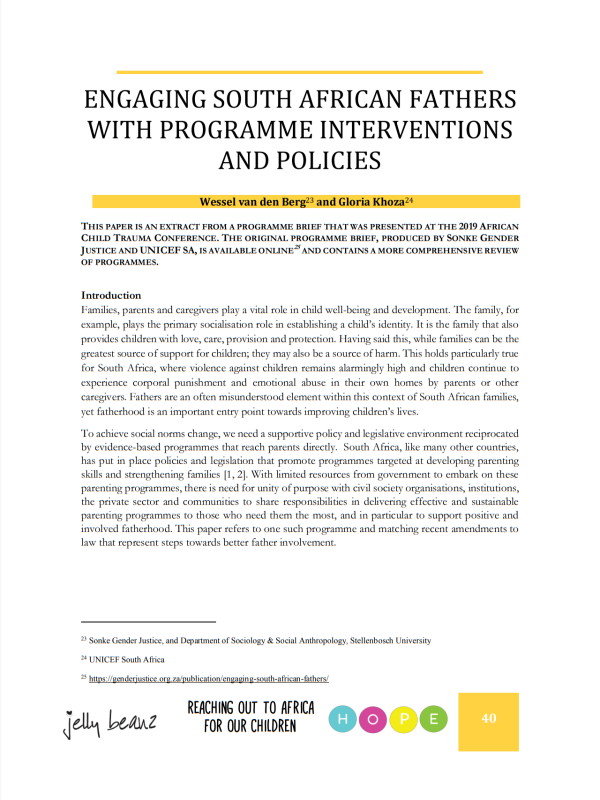
Families, parents and caregivers play a vital role in child well-being and development. The family, for example, plays the primary socialisation role in establishing a child’s identity. It is the family that also provides children with love, care, provision and protection. Having said this, while families can be the greatest source of support for children; […]
Breaking the Cycle of Intergenerational Violence
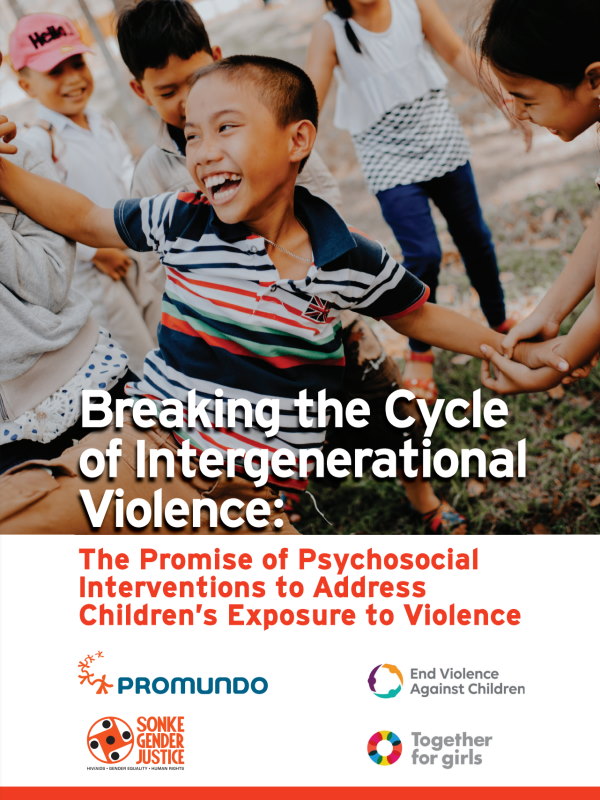
Exposure to violence in childhood can have severe physical, emotional, and mental health consequences and is intimately linked with the likelihood of perpetrating or experiencing intimate partner violence in adulthood. This process whereby violence in childhood is linked to violence in adulthood can be disrupted if children and adolescents are provided with quality, targeted interventions […]
MenEngage Africa Strategy to Strengthen Youth Advocacy for Comprehensive Sexuality Education and Sexual and Reproductive Health and Rights

This Youth SRHR Strategy is aligned with the MenEngage Africa Strategic Plan 2019-2023. It has also been developed in line with the Maputo Plan of Action 2016-2030 for the Operationalisation of the Continental Policy Framework for Sexual and Reproductive Health and Rights, and the Southern African Development Community’s Strategy for Sexual and Reproductive Health and […]
Engaging Men in GBV and HIV prevention, SRHR promotion and parenting
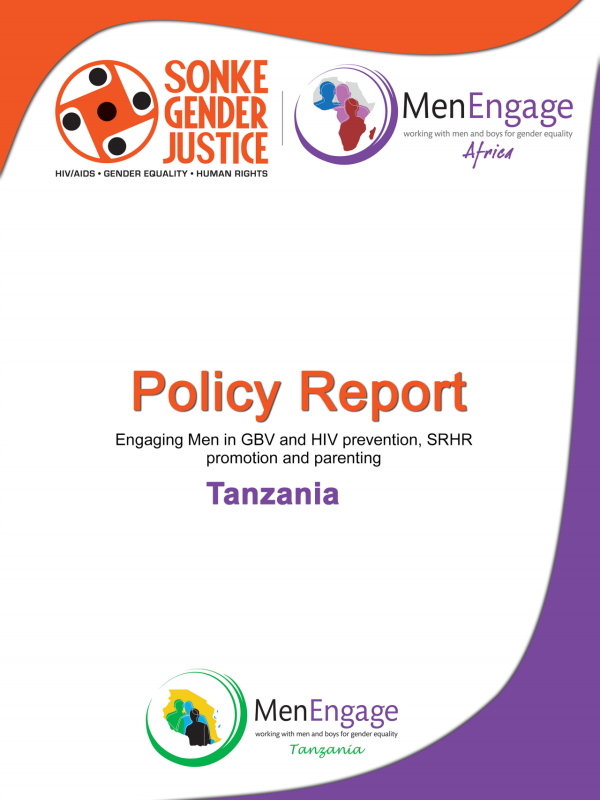
This report explores the strength and weakness of selected relevant policies, laws and plans in terms of engaging men and boys; and provides recommendations for how such policies can improve the way in which they include men and boys, account for their needs, enable them to support their partners, children and peers and facilitate their […]
Asijiki Coalition: Sex Work and Covid-19 Webinar

This is a report of the webinar hosted by the Asijiki Coalition on the 8th July 2020. The webinar explored the impact of COVID-19 on the lives of sex workers and the continued unlawful policing of sex work, as well as recent policy developments that support the continued call for the decriminalisation of sex work […]
Eastern Cape Liquor Board Complaint Report

This report aims to highlight an aspect of Sonke Gender Justice’s work within its local government accountability (LGA) project in the Eastern Cape province. Our complaint with the Eastern Cape Liquor Board (ECLB) is rooted in Sonke’s mandate of ensuring access to justice andinformation for all who reside in South Africa. Too often, we find […]
Towards harm reduction programmes with sex worker clients in South Africa

This report explores possible harm reduction approaches to a sex worker client intervention in the South African context. It considers the current evidence base on client interventions globally and sets out key recommendations for an effective client intervention programme.Drawing on this framework and recommendations, the report concludes with an example of a curriculum which could […]
Women and Girls’ Experiences of Gender-Based Violence on Public Transport in Gauteng & the Western Cape Province
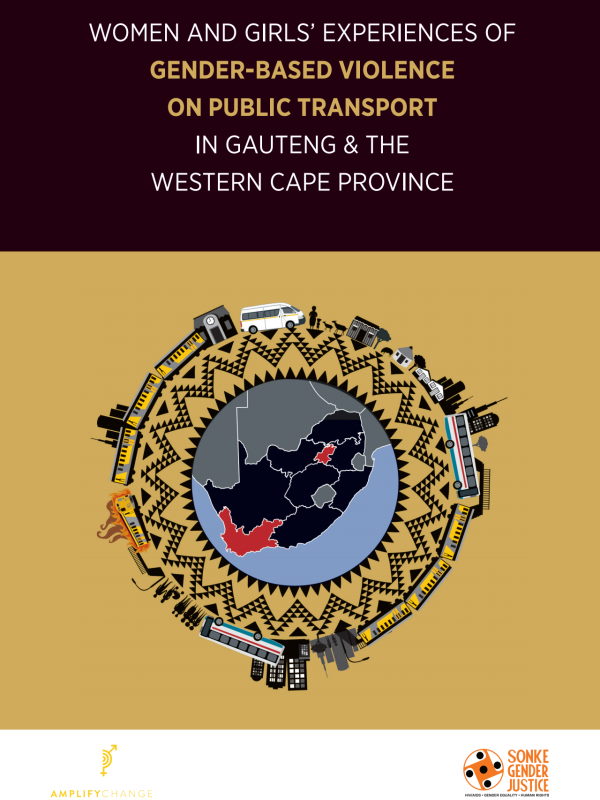
Transport systems have tended to function in ways that prioritise men’s needs over those of women, which has led to public transport being described as ‘an institution through which hegemonic masculinity is maintained’, where women are at greater risk of violence, sexual harassment and sexual assault. Violence in public places, particularly on public transport systems, […]
Positive policing practices and sex work

The report of the Positive Policing Partnership (PPP) Roundtable that took place on 22 May 2019 in Cape Town. The roundtable comprised a panel of five experts from the sex work, law enforcement and civil society sectors. Through discussing ways of creating more positive relationships between law enforcement and sex workers, the purpose was to […]

